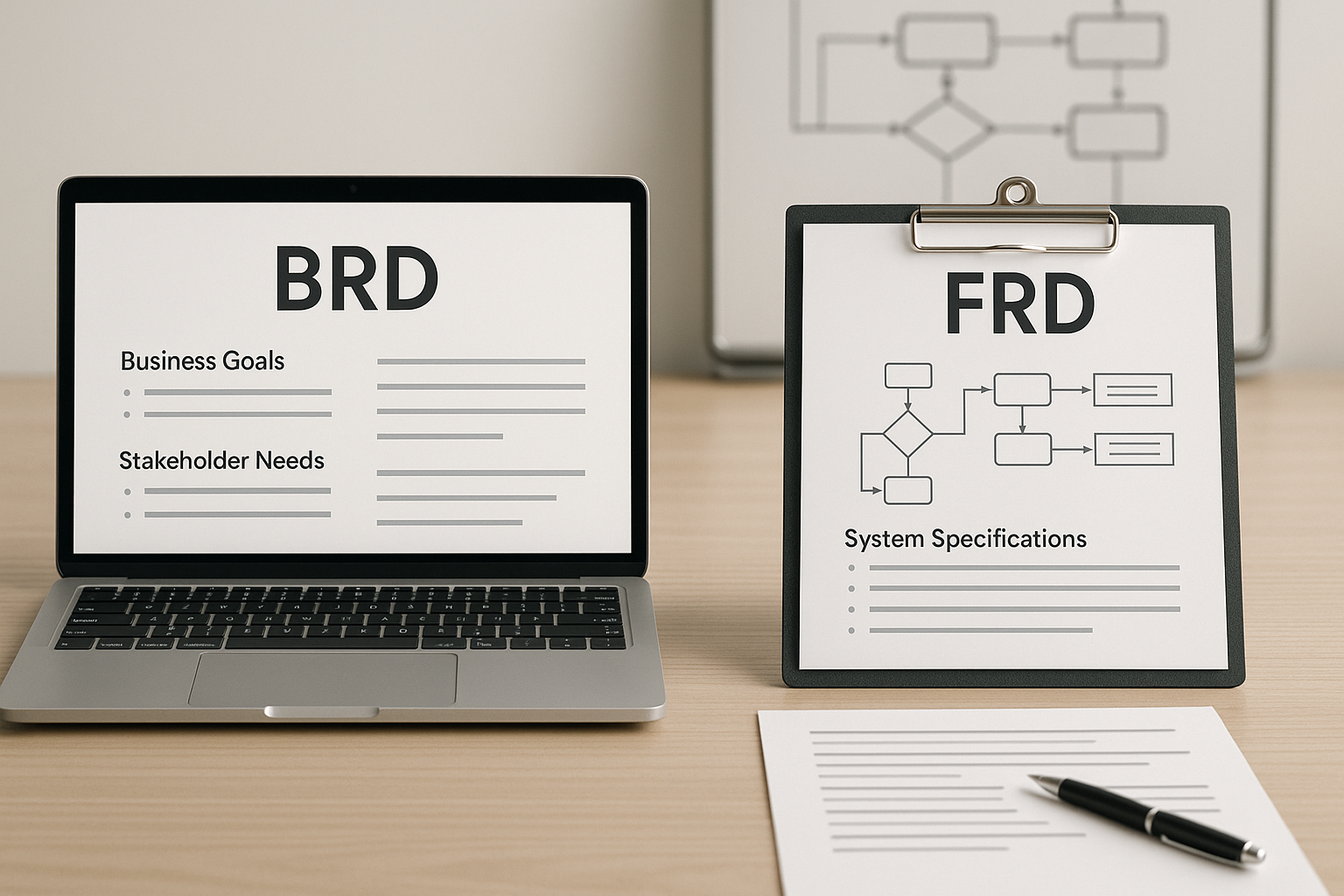BRD vs. FRD: What’s the Difference and Why It Matters?
In the world of business analysis, few things cause as much confusion as the terms BRD and FRD. At first glance, they might seem interchangeable—after all, both are about requirements, right? But for anyone aiming to build clear, actionable documentation that aligns business needs with technical execution, understanding the difference is critical.
In this blog, we’ll break down what a BRD (Business Requirements Document) and an FRD (Functional Requirements Document) actually are, how they differ, and why both matter in the lifecycle of a project. Plus, we’ll link you to our professionally designed BRD + FRD Template Bundle to help you create these documents the right way.
What Is a BRD?
A Business Requirements Document (BRD) captures what the business needs. It’s written from the perspective of the business stakeholders and focuses on goals, objectives, and high-level requirements. A BRD sets the foundation—it answers: What problem are we solving? What does success look like?
Key Elements of a BRD:
Business objectives and goals
Project scope and out-of-scope items
Stakeholders
High-level business requirements
Assumptions and constraints
The BRD is more strategic and less technical. It speaks the language of the business.
What Is an FRD?
A Functional Requirements Document (FRD) translates the business needs into detailed functionality. It answers: How will the system fulfill these business needs? It’s written more for the development and QA teams.
Key Elements of an FRD:
Functional requirements (feature-level)
Use cases and user interactions
System inputs and outputs
Data handling requirements
Acceptance criteria
While the BRD explains the “why,” the FRD defines the “how.”
BRD vs. FRD: Key Differences at a Glance
Audience: BRD is for business stakeholders. FRD is for technical teams.
Focus: BRD focuses on what the business needs. FRD explains how those needs will be met.
Level of Detail: BRD is high-level. FRD is detailed and often includes system logic or mockups.
Both documents serve different but complementary purposes—and skipping one can lead to communication breakdowns and missed expectations.
Why You Need Both
If you're working on software development or process improvement projects, having both a BRD and FRD ensures alignment. Business teams get clarity on goals, and technical teams get a detailed map to execute on those goals.
By maintaining a clear separation between what is needed and how it should be built, teams reduce risk, improve stakeholder communication, and deliver better results.
Pro Tip: Use Our BRD + FRD Template Bundle
Writing these documents from scratch can be time-consuming. That’s why we created a BRD + FRD Template Bundle—a ready-to-use, professionally formatted toolkit designed specifically for Analysts.
👉 Grab the BRD + FRD Bundle under ‘Templates’ or on Etsy : BRD + FRD Bundle
Inside, you’ll find:
- BRD Template with sections for Scope, Objectives, Stakeholders, Requirements Table & Approvals
- FRD Template with Functional Reqs Table, Acceptance Criteria, User Roles, and Wireframe Placeholders
- Real-world structure used in actual BA projects
- User Guide with examples and writing tips
Perfect for Business Analysts, Product Owners, and anyone leading requirement gathering efforts.
Final Thoughts
If you're serious about bridging the gap between business goals and technical execution, understanding the difference between a BRD and FRD is non-negotiable. They’re not just documents—they’re alignment tools.
Learn them. Use them. And when in doubt, grab our templates to help you get started faster and smarter.
